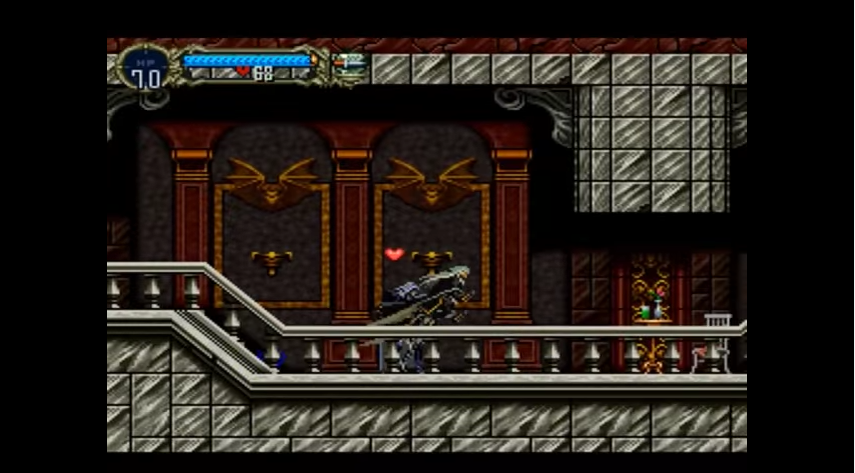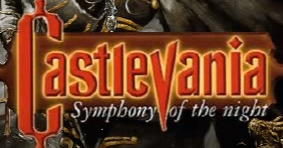Overview
STRENGTHS
+ Terrific sprite-based graphics that stand the test of time
+ Helped create and define a genre
WEAKNESSES
- Some RPG elements just aren't needed
- Many genre cliches and horrendous voice acting
Castlevania: Symphony of the Night Information
Release Date: October 3rd. 1997
Developer/Publisher: Konami/Konami
It's strange to think that in the advent of 3D graphics, a 2D game is considered as one of the best of the era. Castlevania: Symphony of the Night (SotN) is one half of the Metroidvania genre, one where it still reigns supreme and because it didn't to enter the 3D realm, it's looks are just as beautiful today as they were at the time of release. The complaints that plagued the era are still represented here but SotN brings new life to the hack and slack and platforming of its forebears.
Story - Castlevania: Symphony of the Night Review
SotN starts off where it's predesesor left off but offers a twist. This is an excuse to control a new character, Alucard, who definitely exudes a goth aesthetic and remains cool. These are vampires we're talking about. Following this opening scene, the story becomes completely minimalized. There are only a handful of verbal exchanges with horrid voice-acting and text boxes that really serve little purpose but to introduce a new character with little influence on the story or help to wrap things up when encounter the final boss.
The story is possibly the last reason to play this game unless you truly are invested in the "continuation" of the previous entries which were also minimal. There is the overall and perpetual lore that Castlevania: Symphony of the Night does well to perpetuate; creating a hierarchy of powerful monsters and answering eternal boyhood questions like, who would best who in a fight.
Castlevania: Symphony of the Night TECHNICAL Performance
In retrospect, Symphony of the Night may look better now than at the time of its release due to its sprite-based graphics. Because of this, the art style is much more appreciated as opposed to the jagged polygons of the era. Even with the beautiful 2D art style of a game like Guacamelee!, the smoothness of the high definition doesn't allow for the meticulous composition or rough sprites as seen with SotN.
“In retrospect, Symphony of the Night may look better now than at the time of its release due to its sprite-based graphics.”
One particular thing that allows the sprite to standout are that the sprites animated over scrolling backgrounds. In certain ares there are scaling or rotating techniques. Parallax scrolling effects also simulate depth in backgrounds and can be seen throughout the game. In many instances the use of 3D graphics are used such as the skies of the Chapel area where the perspective shifts to platforms moving towards the screen. Some attack animations, from spells integrate 3D, which does help them to stand out from the rest of the game. All of these 3D techniques are great additions, and are cosmetic in the grand scheme of accenting the sprites.
It's also important to note that the voice acting, although limited is absolutely horrendous. Most of it is done in the first five minutes of the game and is extremely off-putting. It doesn't get better, either. Luckily it is few and far between, and another example of how far we've come.
Music of Castlevania: Symphony of the Night
The soundtrack from SotN is extremely varied, crossing and mixing genres, modern and classic alike. The tracks that work well are catchy, and sound closer to "real music" while some of the tracks are extremely repetitive and can be described than nothing better then video game music. Because of the Gothic setting, and Japanese design combined with the quality of music in video games of 1997, there isn't a lot of standout music. One track in particular was always welcome when entering a specific area (each of which have their own themes), the Marble Gallery. The Marble Gallery is the perfect platforming song, essentially willing you to jump and attack to the rhythm.
Castlevania: Symphony of the Night Gameplay Review
In its simplest form, SotN is a side-scrolling action platform (if that's considered a simple explanation). These conventions are familiar to the series, with a jump, attack, projectile or special attack and occasional shield buttons making up the second to second action. What SotN does much differently is two-fold, the game is not linear and there are many RPG elements thrown in.
Alucard's has both hit points (HP) and magic points (MP) which determine the hits (points) he can withstand before dying while his magic points decide how many and the type of spells that can be cast. Other attributes that can be improved upon; strength - the damage done to enemies, defense - resilience to enemy attacks, intelligence – the speed at which your magic recovers and luck – the frequency that items are dropped by enemies. Depending upon your play style the improvement of any of these particular attributes can make a huge difference. Most of the advantage comes from the strength and hit points though. As these attributes rise, it the game becomes easier. In this sense, the RPG elements are not very deep, but it's still a progression unseen in side-scrollers or action platformers alike.
Unlike many side-scrolling platformers the levels are not linear. There is a lot of back tracking as some areas that are not accessible early in the game can only be entered upon acquiring a certain ability. These abilities include changing form which such as becoming mist and passing through gates, a bat that can fly too reach previously unreachable le areas, a wolf with running and long jumping ability and the ability to double-jump (which is hard to have ever been without). SotN starts you with none of these abilities which makes back tracking less tedious and even provides new exploration once they're gained. These abilities are acquired in a myriad of ways. Some can be purchased or found behind hidden doors or within passages but most of them are gained by defeating bosses. It's always a satisfying feeling gaining a new ability because it can be put to use immediately. That's one of SotN's greatest attributes, using your tools and abilities against new enemies, even if it's not necessarily rhe only way, it feels natural.
Despite these positive strides for the genre, at its core SotN is still just a side-scrolling platformer and there is some repetition. This causes boredom when backtracking, hurriedly trying to bypass enemies just to reach your destination. After all, the combat is simple hack and slash mixed with some varied projectiles and the aforementioned special abilities. There are no combos, it's simple timing of jumping and striking for the most part.
Castlevania: Symphony of the Night Review Roundup
Castlevania: Symphony of the Night is the perfect connection between the 16-bit side-scrolling heyday and the RPG inspired conventions of every game to come in the future. SotN created at least half of a new genre, Metroidvania, that honestly hasn't been surpassed since, only reimagined in games like Guacamelee! and Shadow Complex. While some of the trappings in the genre seem cliche, it's important to remember why, and that why is because most of the were invented in Castlevania: Symphony of the Night.








